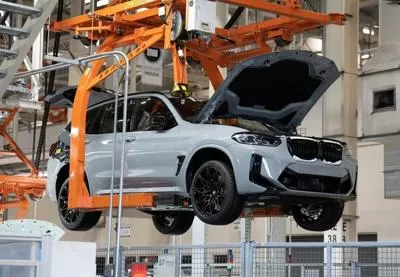The Microscopic Messengers: Bioreactors Unlocking the Future of EV-Based Medicine
Share- Nishadil
- September 17, 2025
- 0 Comments
- 3 minutes read
- 33 Views

WPI Breakthrough: Bioreactors Revolutionize Extracellular Vesicle Production for Future Medicine
Worcester Polytechnic Institute (WPI) researchers have engineered a novel bioreactor system that dramatically increases the production of Extracellular Vesicles (EVs) by 30 times, paving the way for scalable therapeutic applications in drug delivery and disease treatment.
Imagine tiny, natural nanoparticles, mere specks in the vast cellular universe, yet holding the key to revolutionary medical treatments. These are Extracellular Vesicles (EVs)—minuscule packets released by cells, carrying a precious cargo of proteins, lipids, and nucleic acids. They are the silent couriers of biological information, orchestrating communication between cells, and scientists worldwide believe they hold immense promise for drug delivery, diagnostics, and therapies for diseases ranging from cancer to neurodegenerative conditions.
For years, the therapeutic potential of EVs has been tantalizingly close, yet frustratingly out of reach for widespread clinical application.
The primary hurdle? Scalability. Traditional methods for producing EVs yield incredibly low quantities, making clinical trials and mass production an expensive and inefficient pipe dream. But what if we could mass-produce these cellular marvels, transforming a trickle into a torrent?
Enter the groundbreaking work from Worcester Polytechnic Institute (WPI), where a team of visionary researchers has engineered a sophisticated bioreactor system capable of dramatically increasing EV production.
Led by the brilliant minds of Professor Marsha Rolle and Research Assistant Professor Raymond Page, their innovation represents a monumental leap forward, potentially ushering in a new era of EV-based medicine.
Their research, detailed in an upcoming issue of the journal Tissue Engineering Part C: Methods, showcases a bioreactor system that not only boosts EV yield by an astonishing 30 times compared to conventional 2D cell culture methods but also maintains the quality and therapeutic efficacy of these precious nanoparticles.
This isn't just an incremental improvement; it's a paradigm shift, addressing the most critical bottleneck in bringing EV therapeutics from the lab bench to the patient bedside.
So, how does this revolutionary system work? The WPI team utilizes a hollow fiber bioreactor, an ingenious setup that creates a 3D microenvironment for cell growth.
By mimicking the physiological conditions found within the body, this system allows for an incredibly high density of mesenchymal stem cells (MSCs)—a type of cell known for its potent therapeutic properties and its ability to produce high-quality EVs. In this optimal environment, MSCs thrive, continuously releasing a steady stream of EVs into the surrounding media, which can then be efficiently collected.
The implications of this breakthrough are profound.
By providing a scalable, cost-effective method for producing vast quantities of therapeutic EVs, the WPI bioreactor system paves the way for accelerated research, robust clinical trials, and eventually, the widespread availability of EV-based treatments. Imagine personalized medicine where EVs, custom-tailored to deliver specific drugs or genetic material, can target diseased cells with unparalleled precision, minimizing side effects and maximizing therapeutic impact.
This innovative approach is not merely about producing more EVs; it's about making them accessible.
It’s about unlocking the full potential of these microscopic messengers, transforming them from a scientific curiosity into a powerful new class of medicine. The future of healthcare is constantly evolving, and thanks to the pioneering efforts at WPI, that future looks increasingly bright with the promise of Extracellular Vesicles at its core.
.Disclaimer: This article was generated in part using artificial intelligence and may contain errors or omissions. The content is provided for informational purposes only and does not constitute professional advice. We makes no representations or warranties regarding its accuracy, completeness, or reliability. Readers are advised to verify the information independently before relying on







